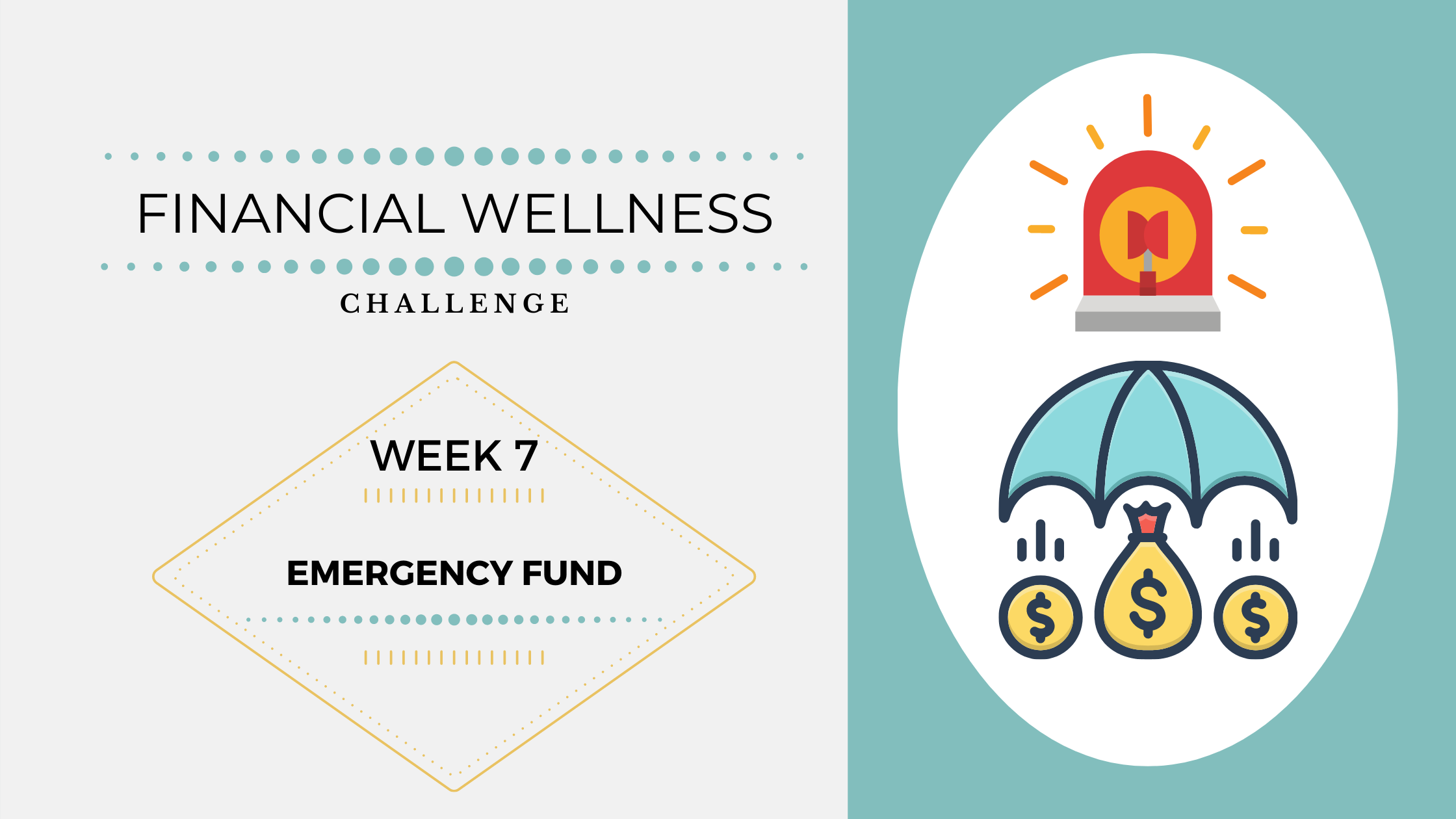Financial Wellness Challenges – Week 7: Emergency Fund

Week 7 – Emergency Budget
Hello there! Welcome to week 7 of the financial wellness challenges. Last week, we talked about paying yourself by automating your savings. This week’s challenge is to create an emergency fund.
I hope you have found some ways that help you manage your money effectively and give you peace of mind over your finances.
Week 7: December 22 – December 29
Financial Wellness Challenges – Activity for the week:
Emergency Fund
Emergency fund give you a money-cushion to fall back on in case a larger expense arises that was unexpected. Emergency funds can help you pay for an emergency expense saving you from going into more debt for the emergency.
Common unexpected expenses include:
- Unforeseen medical expenses
- Home-appliance repair or replacement
- Major car fixes
- Unemployment
There are different thoughts on how much you should put into an emergency fund. It really depends on your own unique financial situation. However, you want to look at the price of items you may have to replace, such as an appliance or an alternator for your car, and try to put at least that much money into an emergency fund. Once you get that-$400-$500, keep working your way up to saving at least 3 months of your income, 6 months is better, but 3 will help out greatly if you need it, especially if you find yourself unemployed.
Where do you keep the money for an emergency fund?
There are a few possibilities:
- Savings account with a high-interest rate and easy access
- High yield savings account
- Prepaid debit/credit card
Of course, the above methods help you make money from your money, which is what we all want, but you can always choose to keep a stash of money in your home if you don’t like the idea of keeping it in a bank. Just realize that you won’t make any extra money from your savings if you choose to keep money at home.
Steps to build an emergency fund
-
Decide how much you want/need to save(final amount).
- For example, my rent is $700/month so I’m going to make that my savings goal. Once I reach it, I know I’ll feel less stress in case something happens.
-
Set a monthly goal to reach that amount.
- Example: $70/month. Goal reached in 10 months.
-
Create a system for contributing consistently to your savings
- Transfer your money automatically into savings.
- Use automated apps to help you round up the change leftover from purchases into savings.
-
Monitor your savings regularly
- Make sure you reach your goal and celebrate your achievements. Monitoring it will help you see that it is working or not working and make changes if necessary as well as help you to stay motivated and on-track.
-
Recognize your successes
Creating an emergency fund is a great way to manage your money and help you from accumulating more debt. Ideally, your emergency fund is separate from your savings fund that we discussed last week but can be the same until you are able to separate your savings into a retirement fund. Remember, you are paying yourself when you make any kind of savings fund, whether it is for an emergency or retirement.